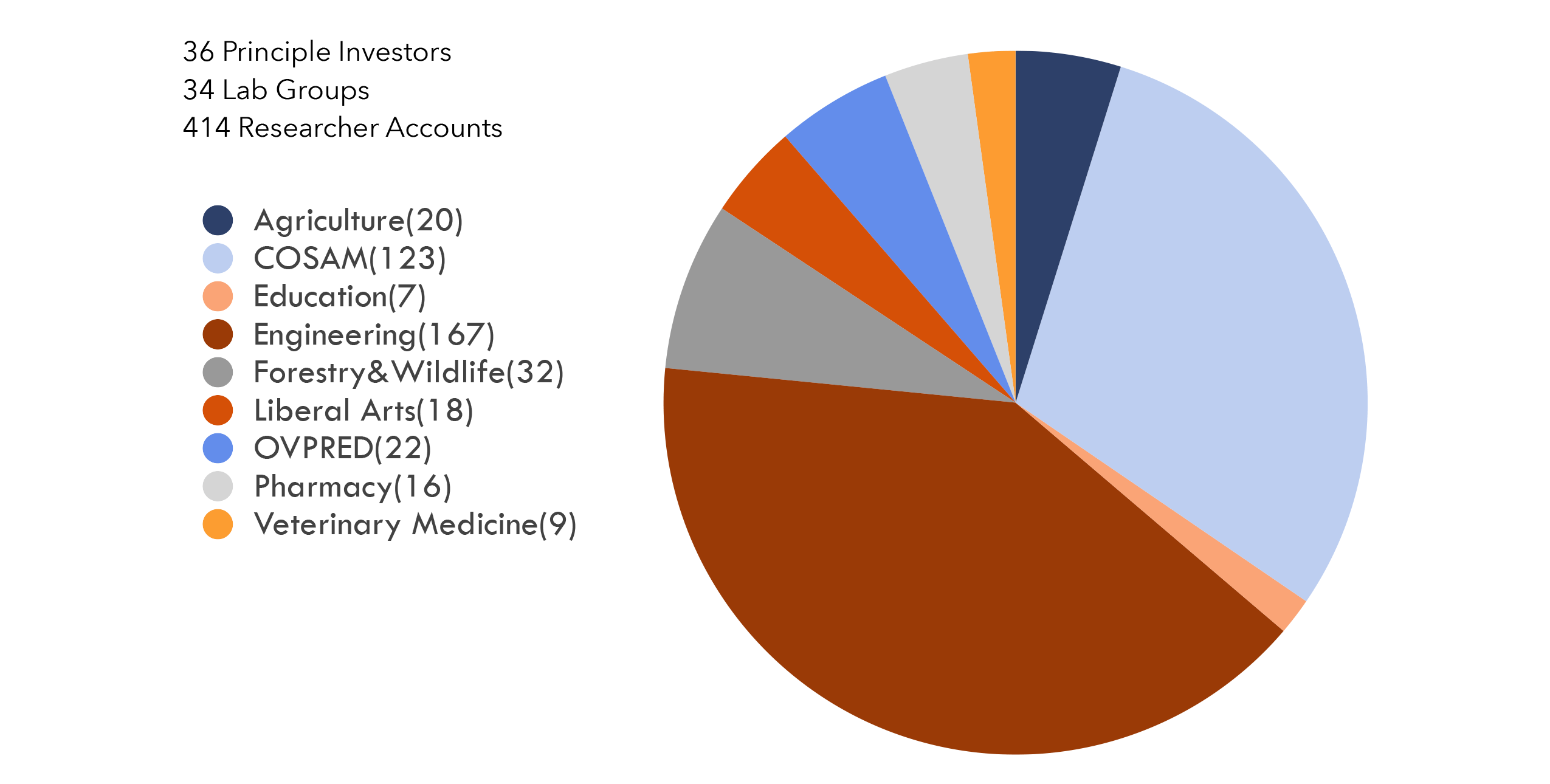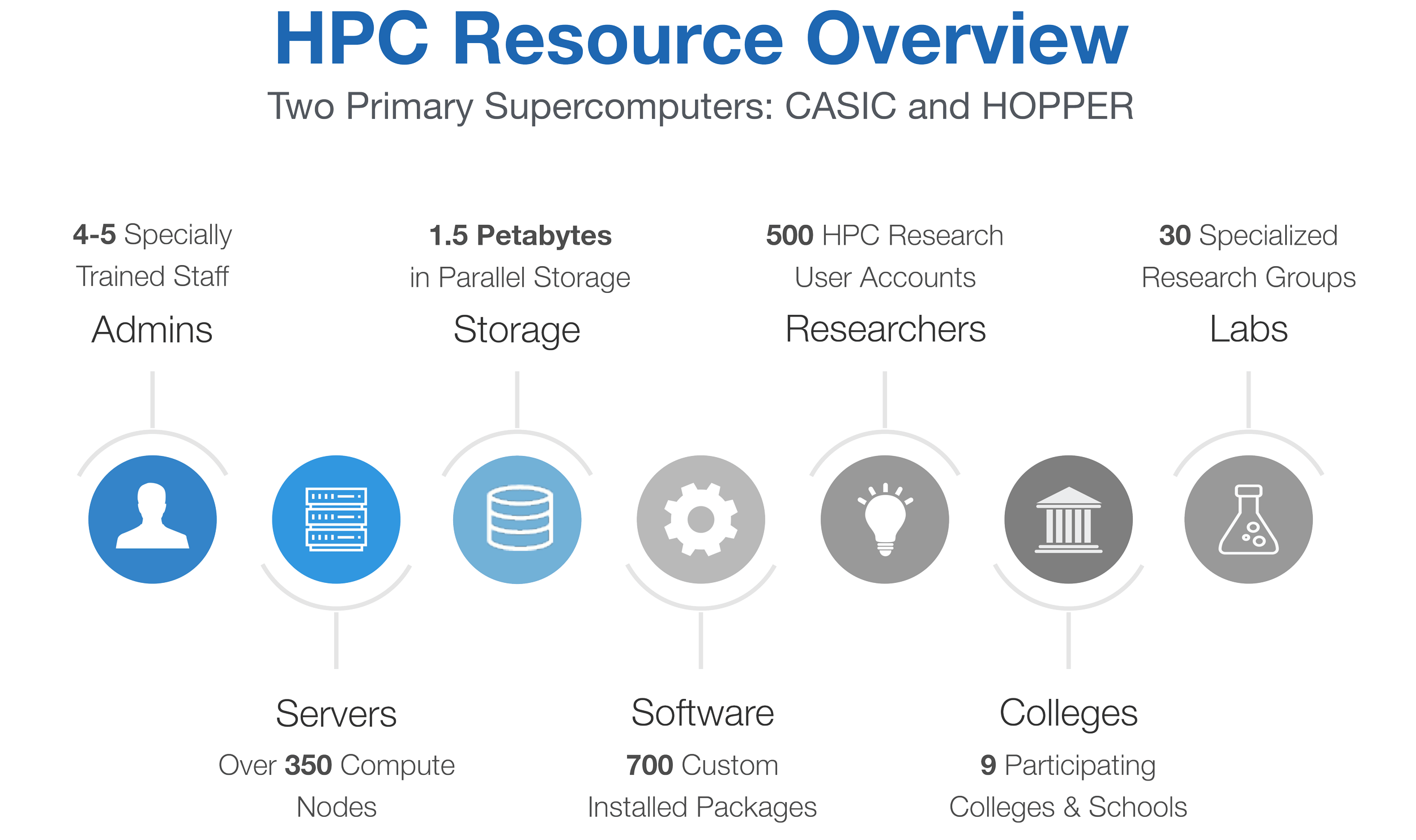High performance computing, or HPC, is an aggregation of computing power that allows users to achieve results far greater than they could normally get out of a single computer. Those aggregations are referred to as clusters, and currently Auburn University has two distinct cluster: CASIC & Hopper. Here's a breakdown of the Academic units that use HPC the most:

As of 2018, we have grown the HPC storage capacity to 1.5 Petabytes. That's enough to download any major blockbuster movie in HD over 65,000 times! But the units listed above have found better uses for that computing power. Hundreds of thousands of jobs are run through these systems each month for different projects. Here are some statistics on those two clusters:

In keeping with our commitment to Auburn excellence, there are plans to continue to grow and improve. In 2018, OIT worked alongside the College of Science and Mathematics, the Samuel Ginn Collge of Engineering, the College of Agriculture, and the Vice President for Research to establish plans for Hopper II. This new cluster will replace the original Hopper and provide a significant refreshment of our HPC capability.
For questions about HPC, you can go to https://hpc.auburn.edu or email the administrators at hpcadmin@auburn.edu.